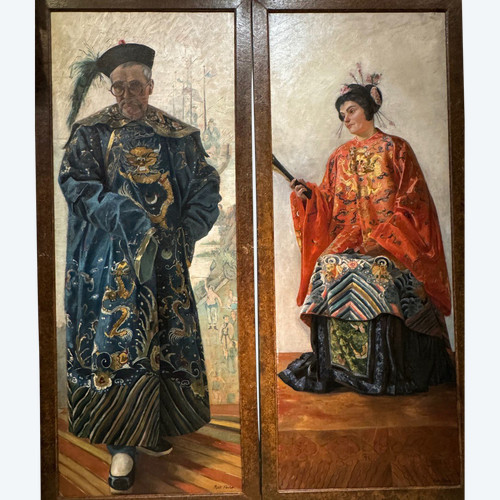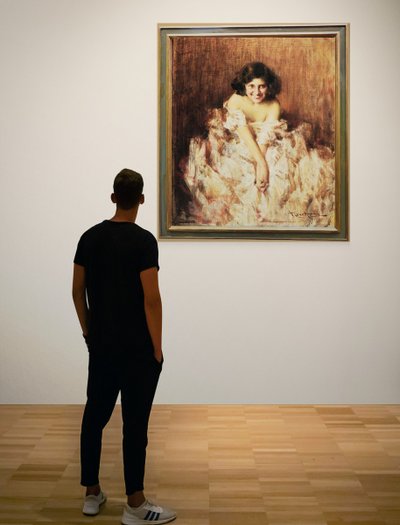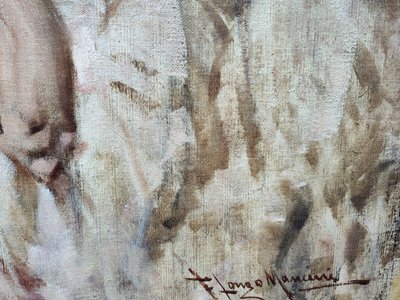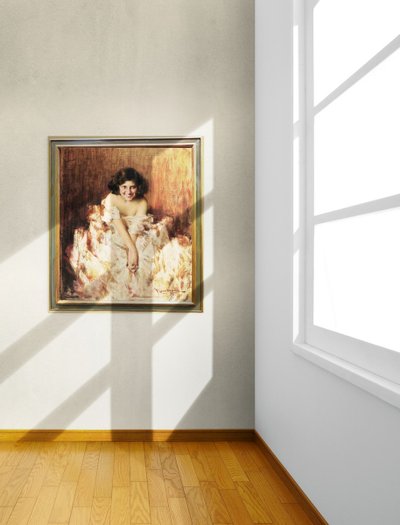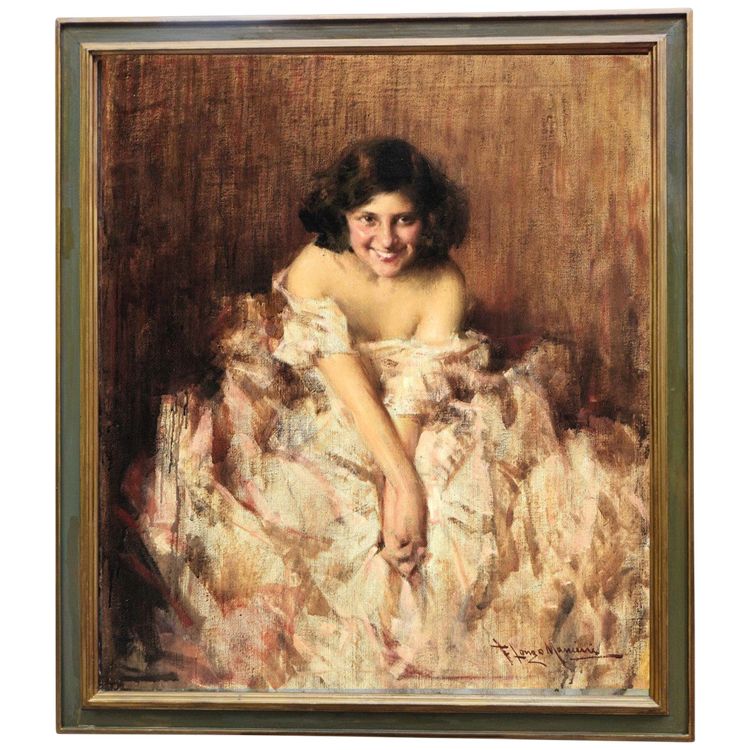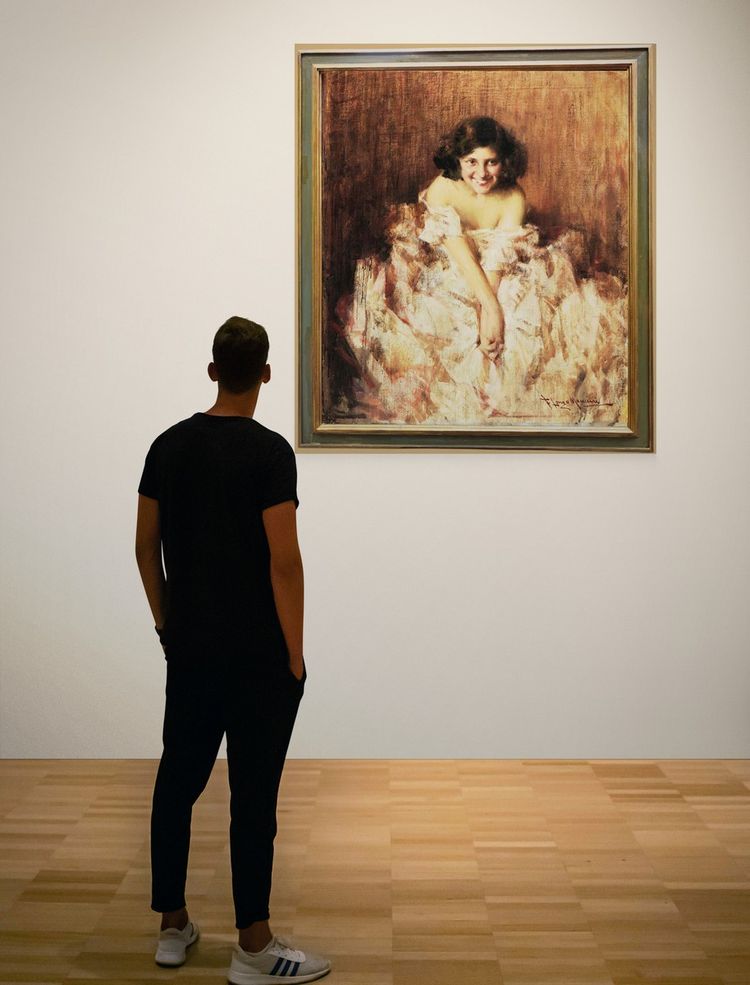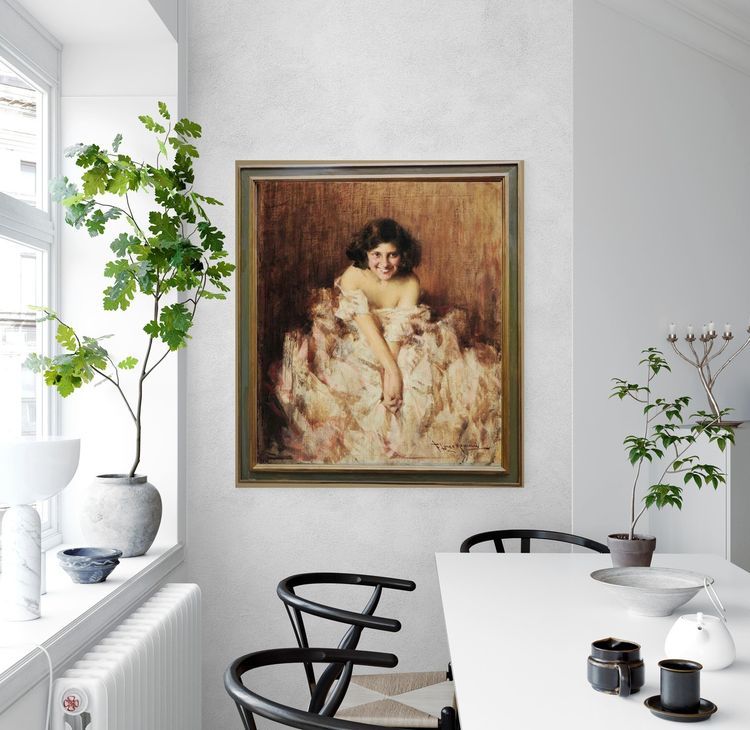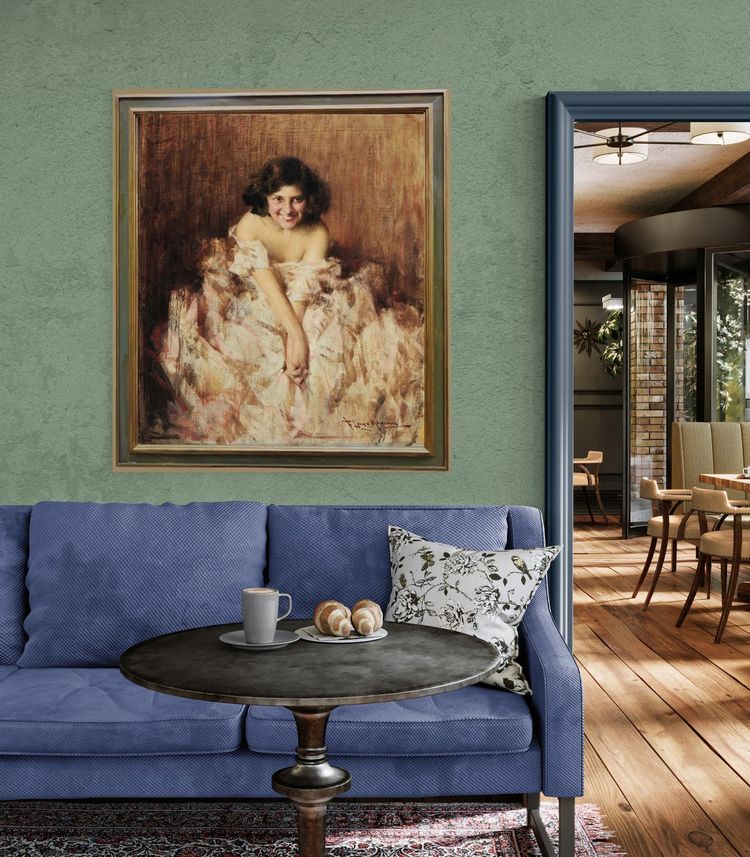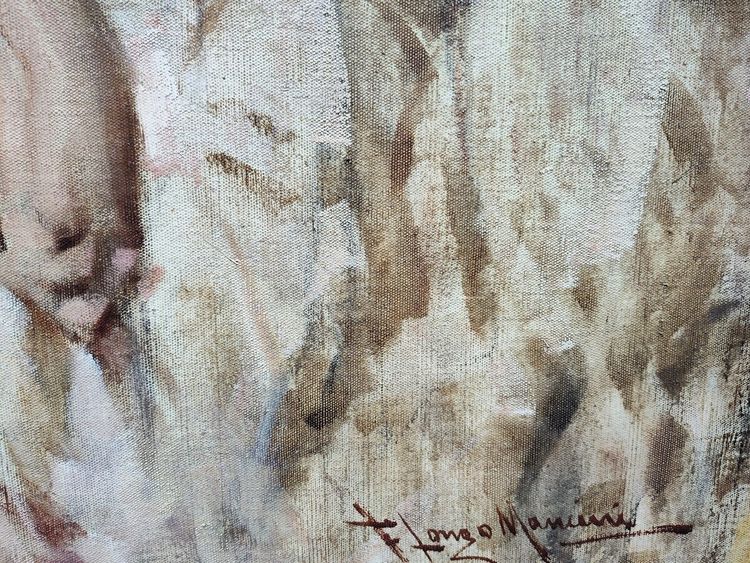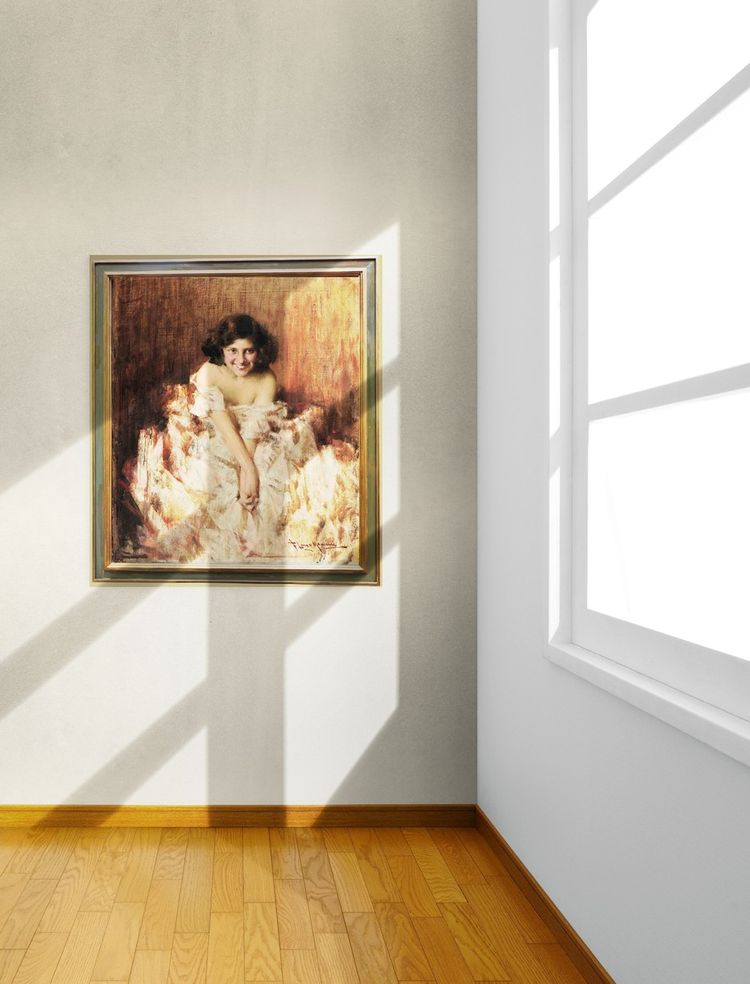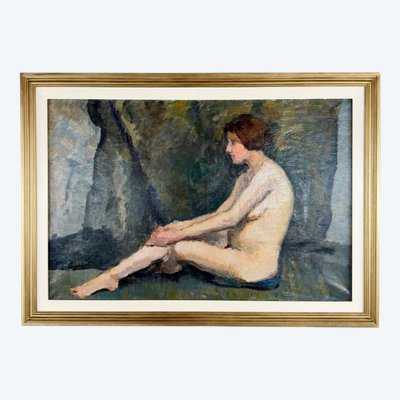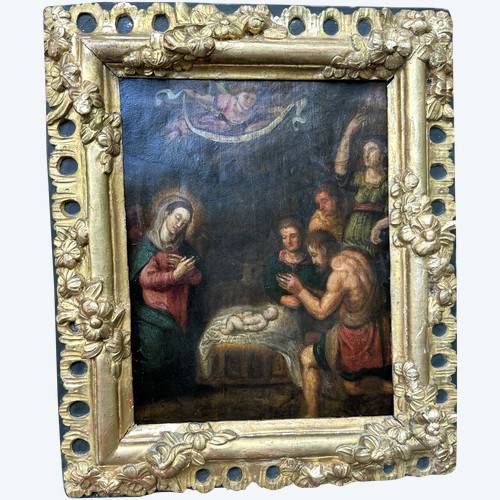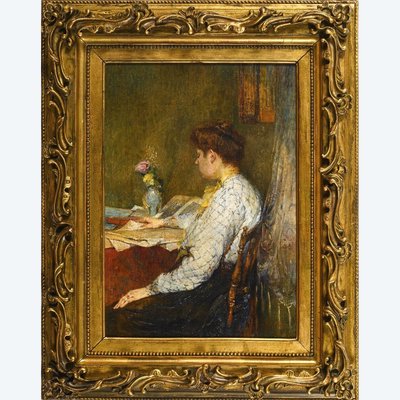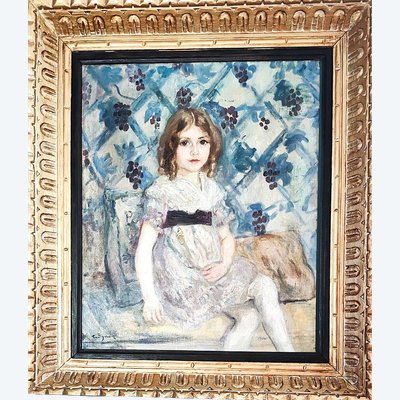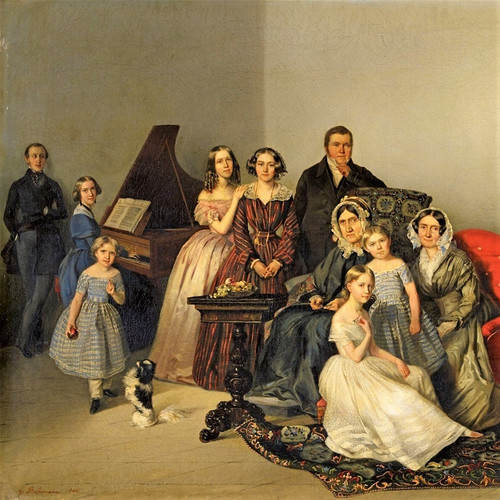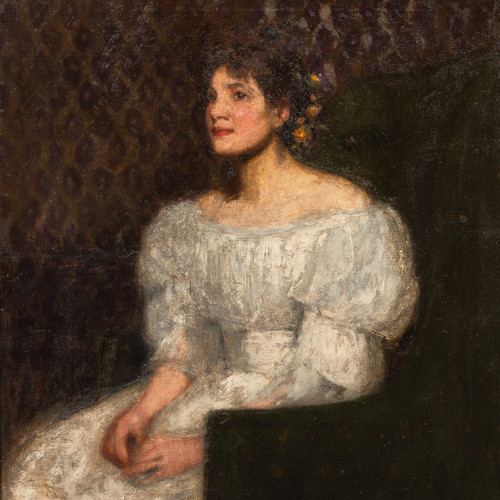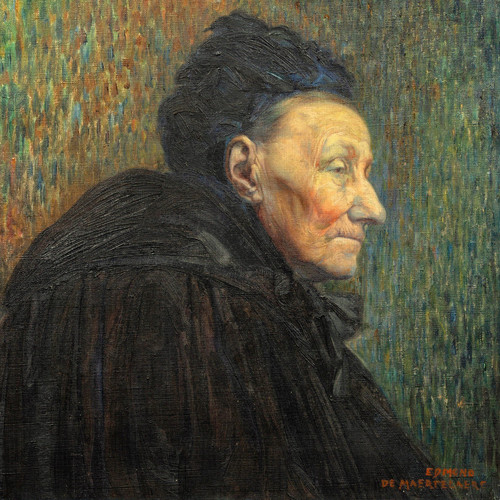This description has been translated and may not be completely accurate. Click here to see the original
She stands on the threshold of a transformation.
A young woman, caught in the quiet exhilaration that precedes her very first ball, smiles—not at anyone in particular, but at herself, and at that suspended moment. The air around her vibrates with anticipation. She has found the dress—the one that fits not only her body, but also her nascent self. And she knows she will shine. Not later, when the music begins, but now, already, in this restrained pause before the party. She radiates. She is not dancing yet, but she already knows she will be the star of the evening.
Her face is the vibrant heart of the canvas: fully formed, luminous, painted with an intimate precision that makes us feel as if we are meeting a real person. Her expression—between assertive confidence and quivering joy—draws us irresistibly. And from this vibrant center, the world gently fades. The image unfolds—in suggestion, in movement, in light.
Her dress isn't simply painted: it seems sculpted in three dimensions on the canvas. Its folds are born from instinctive, bold gestures, as if they had sprung directly from the raw linen. The background and the dress blend into one another, inspired by the same breath, the same impulse. The painter seems to let go, allowing emotion itself to shape the form.
In this tension between control and abandon, between portrait and atmosphere, Mancini evokes more than a simple model. He captures a state, a passage, a barely perceptible tension—that fragile moment just before revelation. Beauty lies not only in the dress, nor even in the smile, but in that rare union between expectation and self-affirmation. In that silent revelation.
This is not an ephemeral scene, but a timeless image. This young woman's joy is personal, yet it becomes universal. Her moment of grace doesn't belong to her alone—it is also ours.
This is the beauty of awakening. This painting also echoes other great portraitists of the intimate. Like John Singer Sargent, Mancini understands how light caresses skin and silk, and how a single glance can suggest an entire inner experience. But where Sargent often composes with a detached elegance, Mancini draws us closer—with a freer, more instinctive brushwork, and with a softer, more immediate warmth. The spirit of Giovanni Boldini also surfaces, in the swirling momentum of the dress, in the painterly calligraphy that animates the canvas. But where Boldini dazzles with movement and worldly glamour, Mancini remains anchored in something quieter, more interior. His subject is not spectacle, but revelation—the understated poetry and profound joy of a young girl in a gown, who already knows she will be the center of the ball.
Ref: WD0AZACBHD




